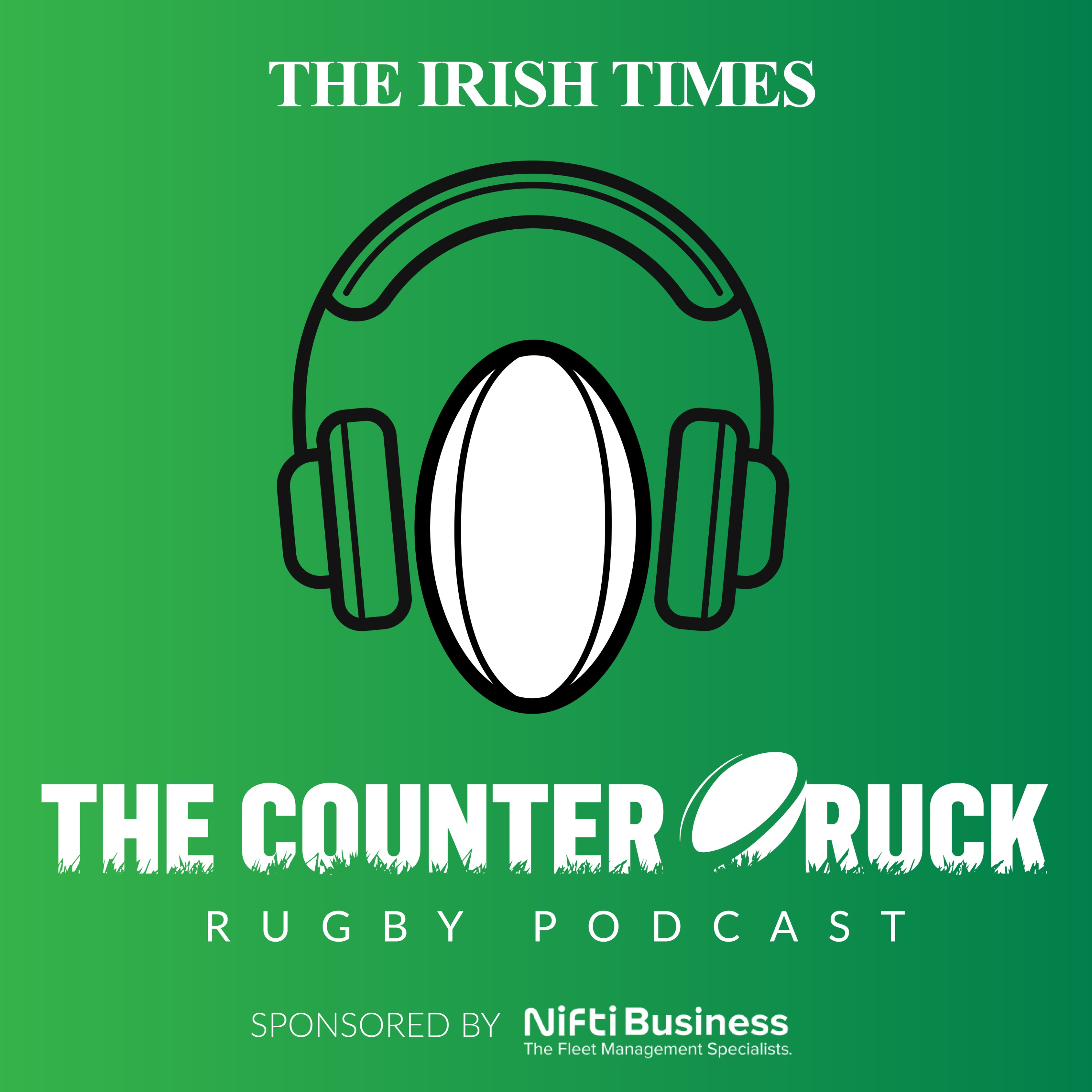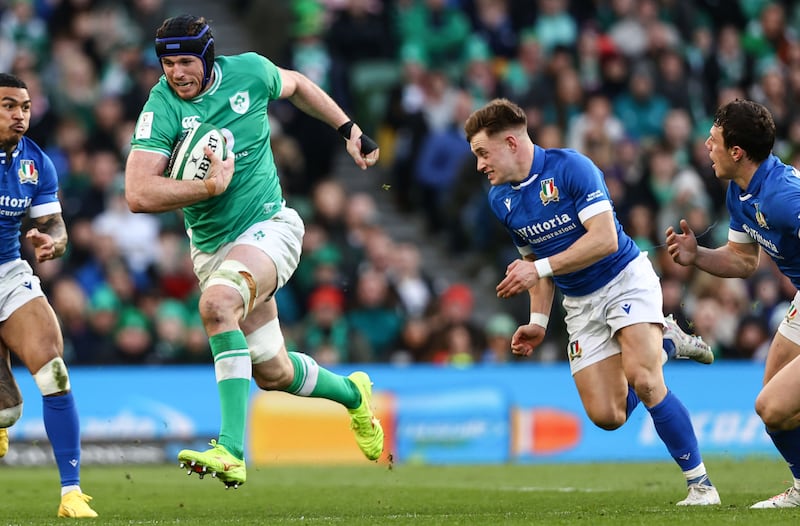American car titan Henry Ford once said that “even a mistake may turn out to be the one thing necessary to a worthwhile achievement”. That was exactly how I felt in 2014 when we won the Six Nations Championship for only the second time in the professional era.
We had made mistakes against New Zealand at the Aviva Stadium in a thrilling encounter three months previously in November, snatching defeat from the jaws of a potentially historic victory. That particular lesson was absorbed, the basis of which was that we needed to keep playing until the final whistle. Dave Kearney’s sublime defensive read against France in the final moments in Paris to force a forward pass provided the evidence.
The specifics of that education process, painful as it was in losing to the All Blacks, became a foundation for progress within our squad, one that fostered a growth in trust, a hunger for more responsibility and a healthy attitude to mistakes.
That begs the question: is any mistake a failure or just another part of the process? There is a constant cycle of “review, evaluate and improve” that exists in professional sport, and I would say there was an aspect of that within the Irish squad after the World Cup in France.
READ MORE
I wrote at the time that it is almost impossible to fault the Irish coaches with the approach they took, setting up a battle-hardened, settled team with 10-plus players playing the most minutes in the pool stages. It is easy with the benefit of hindsight to suggest alternatives, “do this, don’t do that”, with no possibility of being proven right or wrong.
In my opinion I don’t believe Ireland’s coaching roster second-guessed their approach, nor do I think they questioned their process. As Felipe Contepomi explained on The Irish Times Counter Ruck podcast last week, if the decision is right but the execution is poor then the outcome can be improved.

The Italian Job with Felipe Contepomi and Gordon D'Arcy
I would be surprised if coaches do not apply this logic to themselves. In reviewing how they approached the World Cup, the selection process set against the outcome, they would have examined could they have done things differently and if so how?
The answer may lie in the team chosen to play Italy last weekend, which suggests a slightly different tack than before. Ireland had previously been comfortable with stability but for this match there were six changes to the starting team and five more on the bench. There are a number of benefits, one of which is to share the workload on a broader basis within the squad.
The 36-0 win over Italy wasn’t a vintage 80-minute performance but there was enough in the substance of the win, individually and in some of the team dynamics, to please Andy Farrell. Italy were a pale imitation of their first half display against England the previous week, but some of that discomfort was enforced.
[ Joe McCarthy’s meteoric rise from Trinity lock to Ireland enforcerOpens in new window ]
Ireland’s defence was so impressive, constantly harassing the Italian set-piece and breaking their momentum in multiphase possession time and again. Finlay Bealham can be very happy with his performance, especially at scrum time, no doubt enjoying the power transfer from Joe McCarthy and James Ryan in the secondrow.

It will be interesting to see how the Irish tight five takes shape in personnel terms not just for the Welsh match but for the trip to Twickenham and a crack at an England team noted for their set-piece power and pack physicality. Ryan Baird showed his athleticism and skill at regular intervals, so that when the conversation opens up to the successor to the blindside jersey his name is at the top of the list.
This was not a match that required a huge amount of game management, whatever was required was shared efficiently between Jack Crowley, Craig Casey and James Lowe. The Munster halfback pairing played with that familiarity, and struck the correct balance between attacking flair and pragmatism.
As it transpired the Italians were so poor that the Irish attack could have become unstuck by sheer apathy had it not been managed correctly. Casey changed the tempo and the point of attack with some clever kicking.
His halfback partner, after passing such pressurised scrutiny in Marseilles, was just as balanced, his work with the ball-in-hand perfectly complemented by those around him. Without making needless comparisons to other world-class 10s, Crowley left his mark on the game with simple skills executed perfectly at the right time under pressure.
A couple of examples are worthy of mention, his pass through the tackle to free Robbie Henshaw in the lead-up to Dan Sheehan’s try, and another to the tracking Jamison Gibson-Park in the lead-up to the try finished by Calvin Nash.

Italian demolition job with Gerry Thornley and John O'Sullivan
Ulster centre Stuart McCloskey was another to benefit from the reshuffle, and I was very impressed with what was a complete performance. He mixed the physical aspects of his game, carrying hard and tackling with intent, to complement the natural passing/offloading game the big Ulsterman maintains.
[ Stuart McCloskey: ‘It’s been pretty seamless for me’Opens in new window ]
The offloads will form part of any highlight reel but it will be his work in contact that stood out for me. He can be quietly pleased with his performance. McCloskey spoke about how Farrell had challenged him beforehand, and he responded admirably and took his chance.
Robbie Henshaw has endured a torrid time with injuries over the last two years, and most likely was destined for a bench role at the start of the Six Nations had Garry Ringrose not been injured. Henshaw looks rejuvenated in the 13 jersey.
The remit was tougher for those getting their chance from the bench, and the fluidity of the Irish attack stuttered with the multiple changes. Individual errors undermined the best intent but despite that frustration and with momentum not patchy it had no real consequence; the outcome had long been established.
That would have been the expectation prior to the match but a decent performance is not always guaranteed when teams rotate. Ireland’s post-game checklist would have had a fair number of ticks, having managed to rotate, and win and created a bit of competition within the squad. It underlines that Ireland are continuing to evolve, coaches and players, something that bodes well for tougher propositions ahead.
















